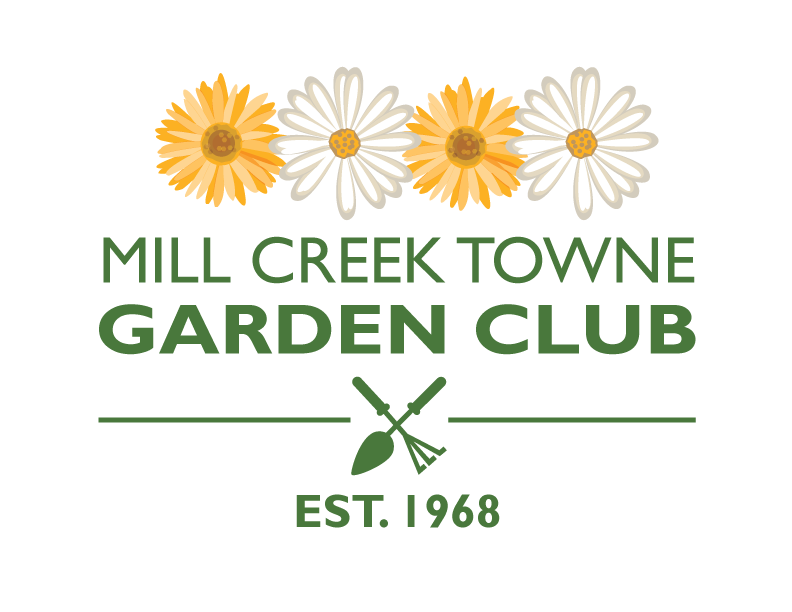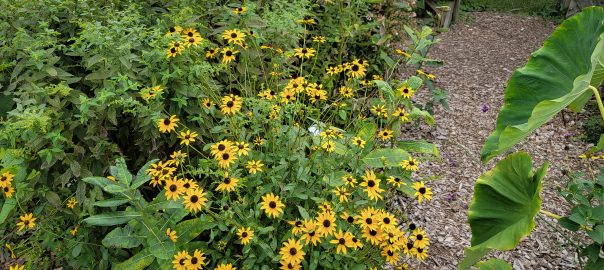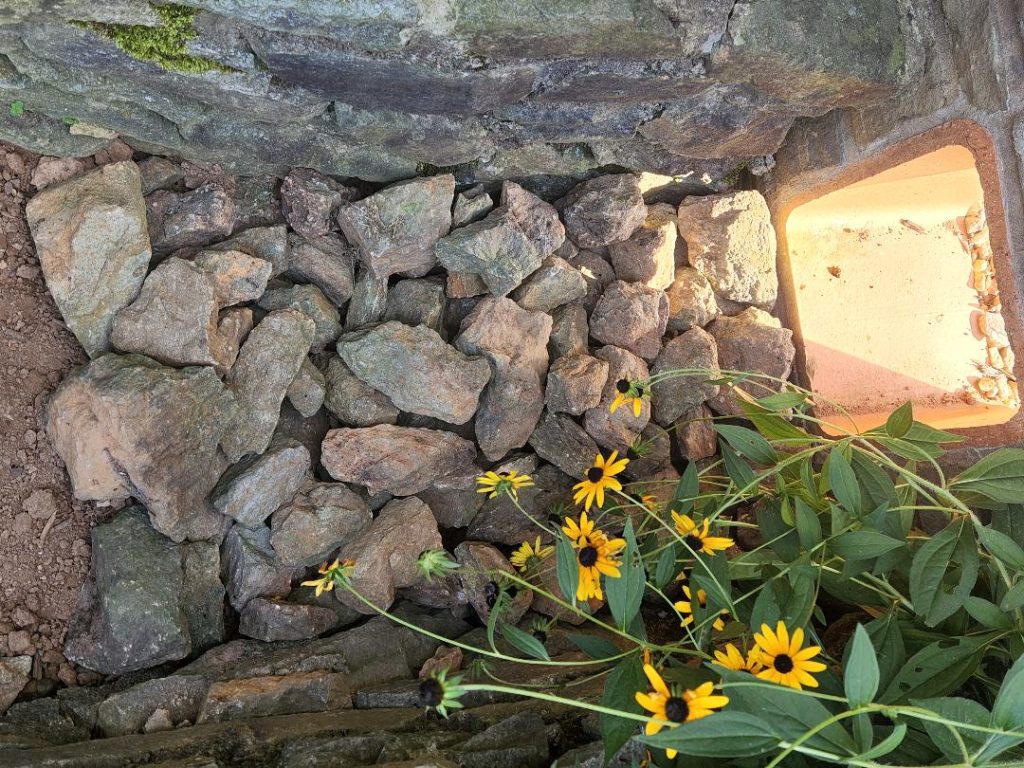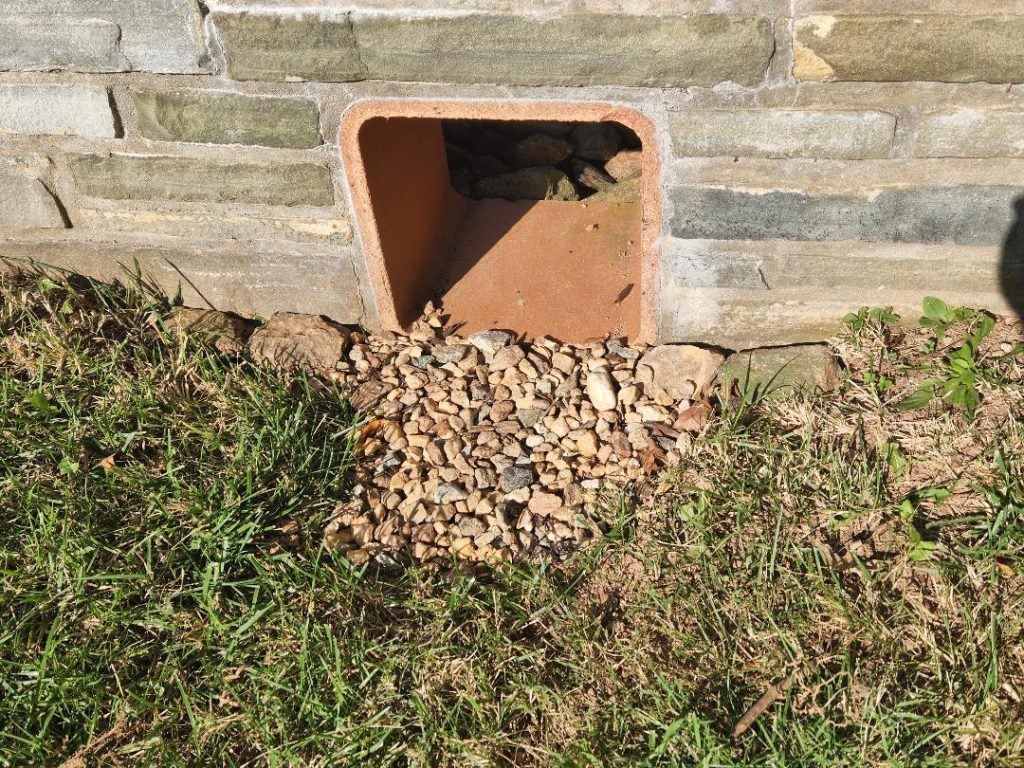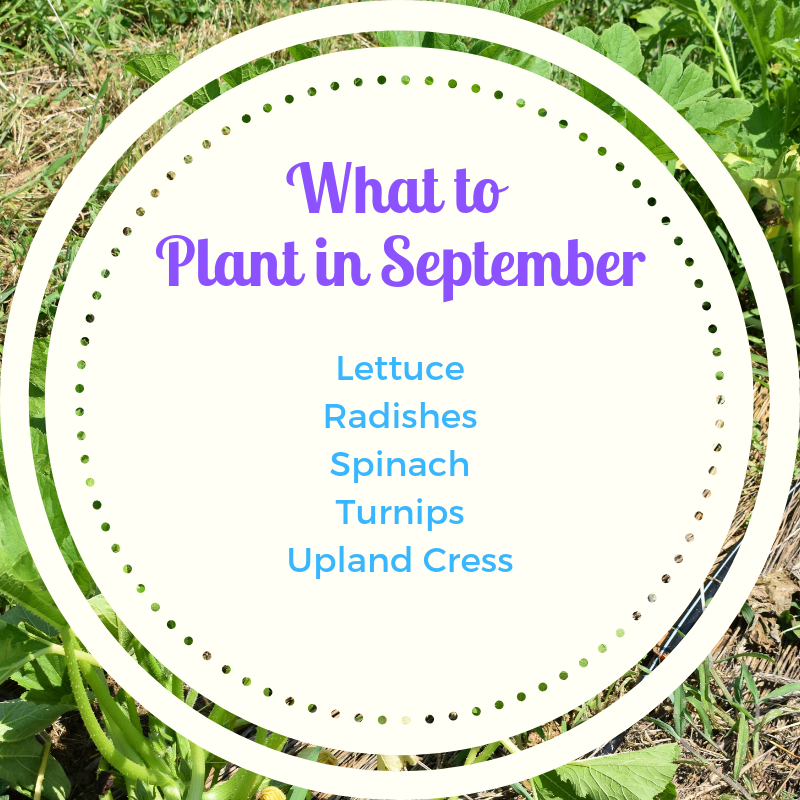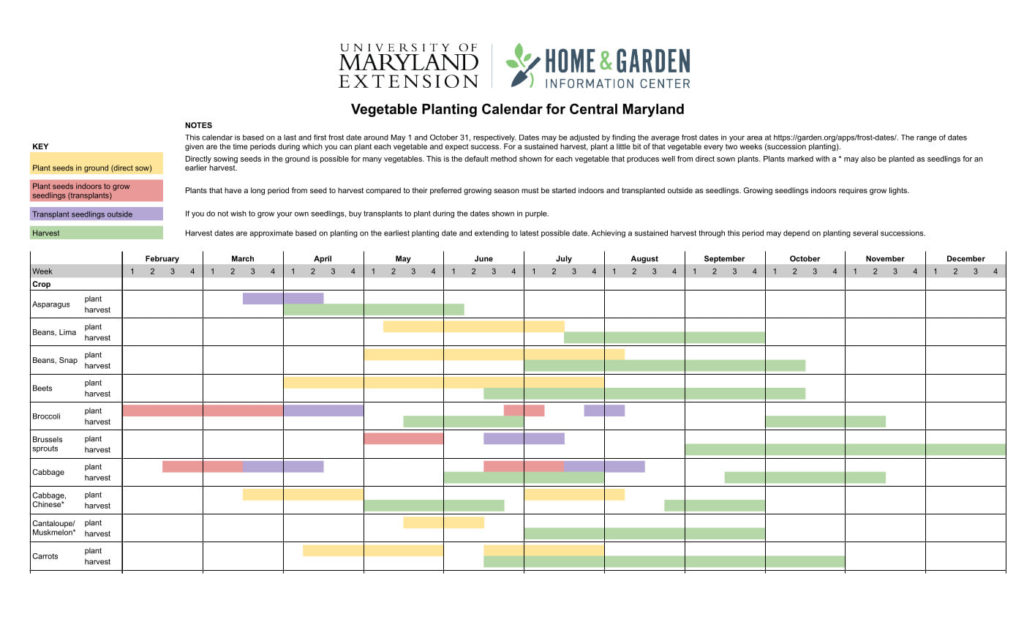Hello Friends, Neighbors, Fellow Gardeners,
As we approach the fall season, enjoy the autumn crops and flowers and preserve some for the winter months. Don’t forget to support our local farmers by visiting our local farmer’s markets and local farms!
Here are some garden tips, educational opportunities, and videos for September. This includes some events from U.S. Botanic Garden, Master Gardeners of Montgomery County, and Maryland Gardens. A lot of gardening events are announced on Facebook and we share them on our Facebook page as well as on our mctgardenclub.org website. Some upcoming events include Grow It Eat It Community Garden Fair Event, Woodland & Wildlife Wednesday, Montgomery County Master Gardener Virtual Question & Answer Program, Mill Creek Towne Garden Club’s Save the Monarchs – Go Native community event in October, and more!
Thanks for the rocks and donations for Miller Fall Entrance!
Thanks to everyone who provided rocks and donations for our Miller Fall entrance erosion prevention project! To improve drainage and inhibit erosion, we added rocks to channel runoff as well as placing some under the opening in the wall which is breaking down.
Mill Creek Towne Garden Club
www.mctgardenclub.org
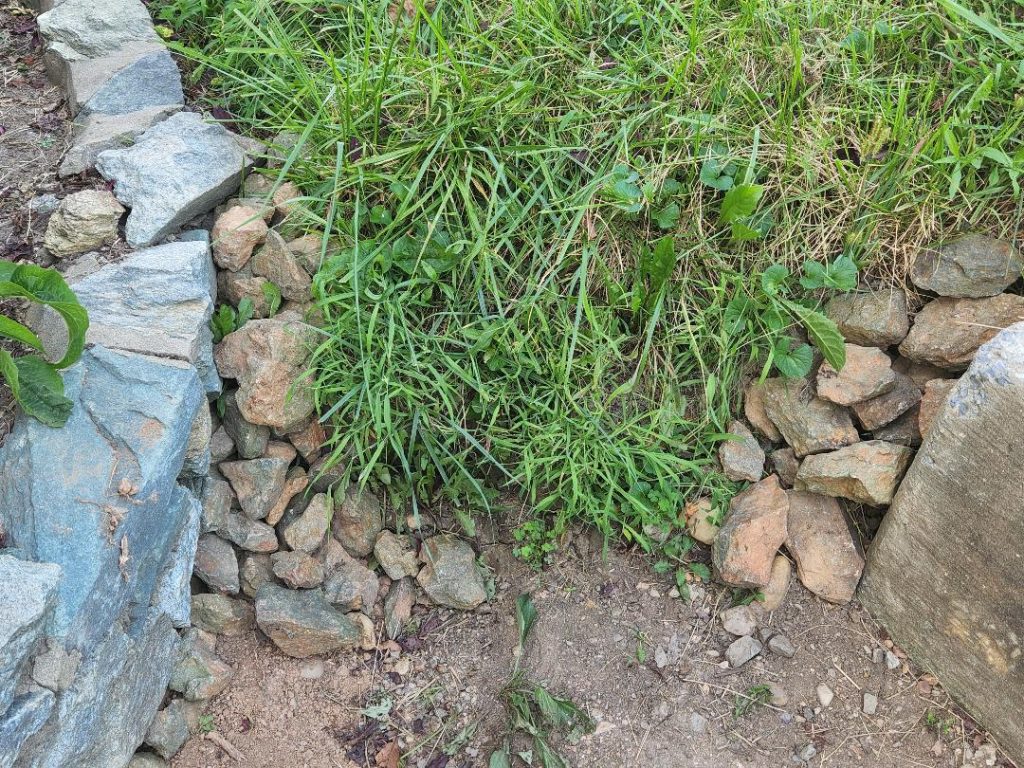
Planning Tips
- It is harvest time and also a good time to start taking stock of what worked well for you this season and what didn’t.
- Keep an eye out for the first frost date. In Zone 6, it is expected between September 30 and October 30. In Zone 7, it is predicted to be between October 15 and November 15.
- Check out local garden centers for end-of-summer bargains.
- Take photos and update your garden journal.
- It’s time to start planning your garden for next year!
- Plan for 2022 with these Free resources: Landscaping with Native Plants by the Maryland Native Plant Society, Plant Invaders of Mid-Atlantic Natural Areas by the National Park Service, Master Gardeners of Northern Virginia Reading Room. Visit our Online Gardening Resources page for more helpful online resources.
- Buy a good gardening book or magazine subscription for a gift for your favorite gardener.
- Have a question about gardening? Check the University of Maryland Extension’s New Maryland Grows blog for garden tips.
Master Gardener Plant Clinics
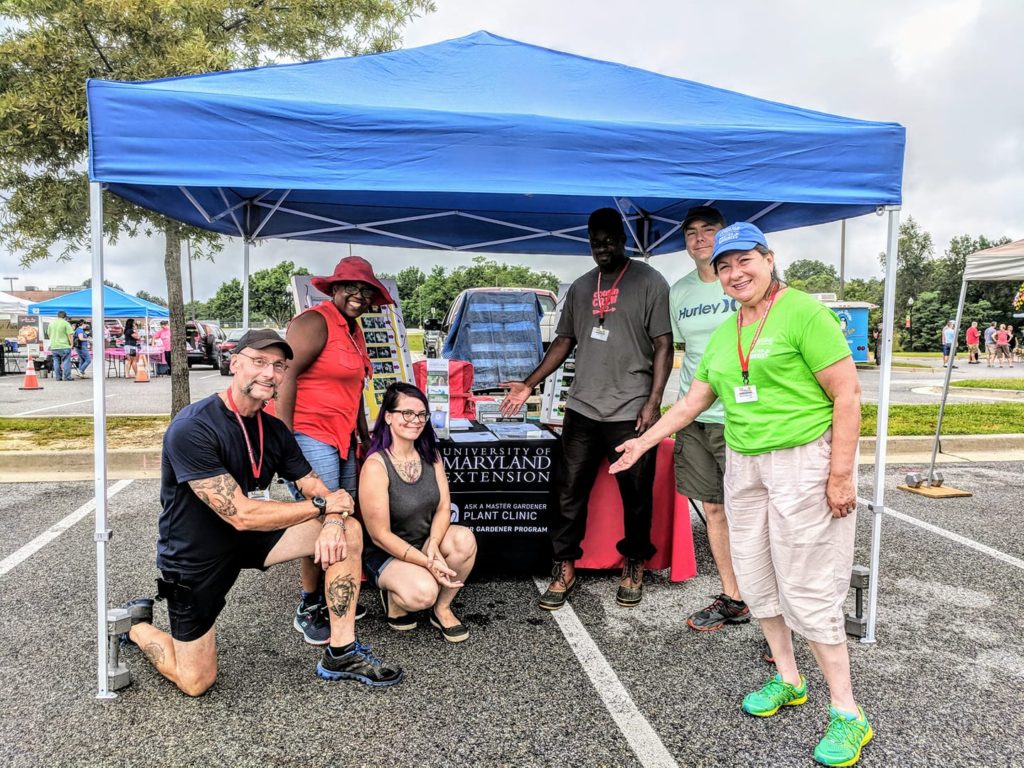
“Ask a Master Gardener” Plant Clinics are returning to several county locations in Maryland. Bring your plant and gardening questions and get answers from Master Gardeners trained by the University of Maryland Extension. Check out the details in your county: https://extension.umd.edu/programs/environment-natural-resources/program-areas/home-and-garden-information-center/master-gardener-program/local-programs
 |
|
What can Master Gardeners do for you?
- Help you select and care for annual and perennial plants, shrubs and trees.
- Determine if you need to test your soil.
- Provide you with information on lawn care.
- Identify weeds, beneficial and noxious insects, and plant diseases and remedies.
- Teach you how to use pesticides, mulch and compost.
- Guide you in pruning trees and shrubs.
- Provide you with options for managing wildlife.
- Provide you with gardening resources.
- Help you submit a plant sample for diagnosis
Plant Clinics are held at several sites in the county on a weekly basis and at special events such as garden festivals and the county fair. Regularly scheduled Plant Clinics are located at public libraries and farmers’ markets throughout the county as well as at the Audubon Naturalist Society in Chevy Chase. There are also clinics three days per week at Brookside Gardens. The busiest season is April through September, but some clinics are open year-round. Bring your plant samples and questions to one of these locations in Montgomery County, MD (see link below to find a location near you):
https://extension.umd.edu/mg/locations/plant-clinics

Home Gardening – Ask Extension Online
Do you have questions about when to plant, how to plant, or… is something wrong with your plants? We can help with all of that and help you succeed in growing a healthy garden this summer! Send your questions and photos to Ask Extension and you’ll get an answer from our team of certified horticulturists, Extension staff, and Maryland Master Gardeners. https://go.umd.edu/AskExtension
New Gardening Books
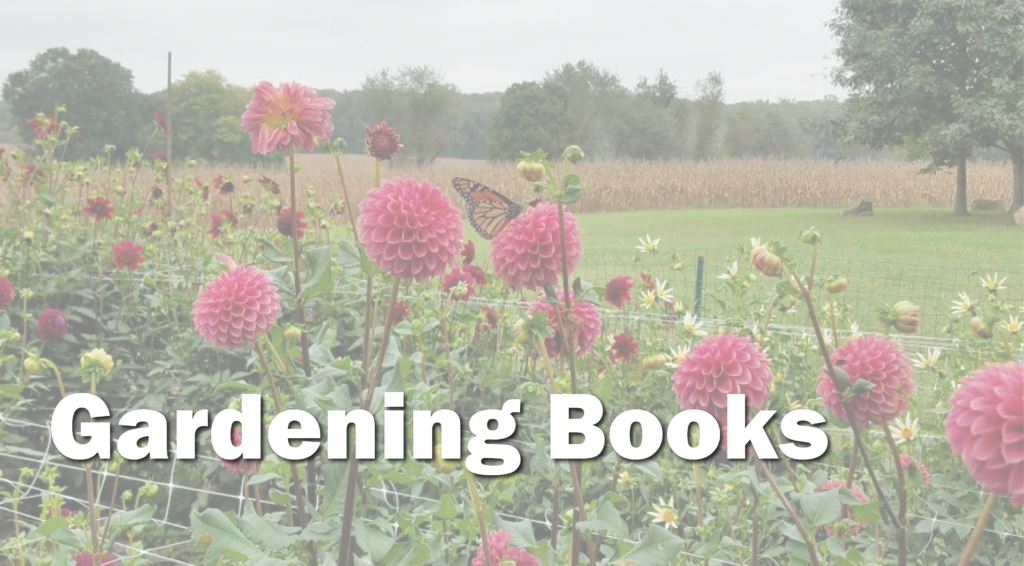
Online Gardening Resources

Online Garden-to-Table Recipes

There are many resources for recipes to make from your garden crops including seed companies, local farms, and online recipe cookbook catalogs. If you grow vegetables, these are very useful resources as the recipes feature the very plant you are growing. Here are few links to recipes you can make from your garden crops
Local Farms
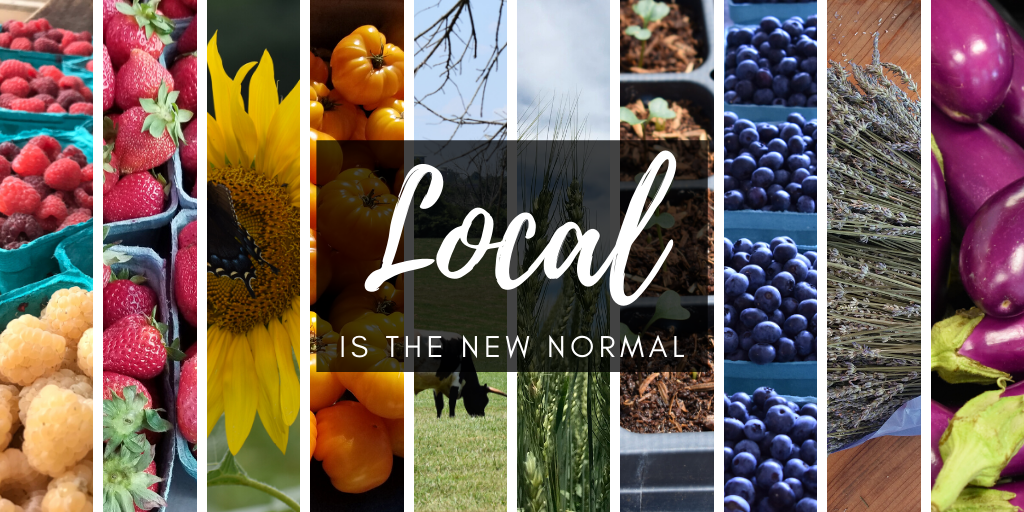
#LocalIsTheNewNormal #BuyLocal
- Support Our Local Farmers – Join a CSA and have fresh local produce delivered to you!
- Visit a local farmers’ market.
How to Support Farmers and Safely Shop at Farmers’ Markets

Montgomery County MD Food and Beverage Guide
The 2022 MoCo Food & Beverage Guide is here! The 4th edition of the Guide from the Montgomery County Food Council is out – delicious baked goods, prepared foods, condiments and more. The craft beverage list grows each year and find two dozen local and amazing farms:


Download Montgomery County’s Office of Agriculture 2022 Farmers Market Flyer to find a farmer’s market near you.
Flowers and Groundcovers
- Begin replanting pots with hardy annuals.
- Plant newly purchased plants.
- Remove spent annuals replacing with fall annuals. Water deeply.
- Check your container plants and keep them well-watered.
- Bring in houseplants if you took them out for the summer.
- Your summer annuals will be reviving now with cooler temps and some rain. Cut back any ragged growth and give them some fertilizer. They should put in a good show until the first hard frost.
- Deadhead spent flowers to encourage reblooming.
- Divide and transplant perennials; in particular, peony and iris.
- Take cuttings from coleus and begonias to propagate and over-winter indoors.
- Cut fully yellow lily stalks.
- Fertilize established bulb beds.
- Start shopping for spring bulbs.
- As the days get cooler, plant hardy Mums.
- Water transplants deeply when dry.
- Pinch out tips of leggy plants.
- Stake tall plants.
- Hand-pick Japanese Beetles or shake them off over a bucket of soapy water. Early morning is a good time to catch them, while they are still drowsy.
- Pests to watch for: Aphids, 4-lined plant bug, spidermites, whiteflies, Deer, slugs, snails.
- Diseases to watch for: Damping off of seedlings, Botrytis on peonies, Volutella blight on pachysandra.
- See UMD’s HGIC Garden Tips for more details.
- For a list of native plant resources, visit: https://extension.umd.edu/hgic/topics/native-plant-resources
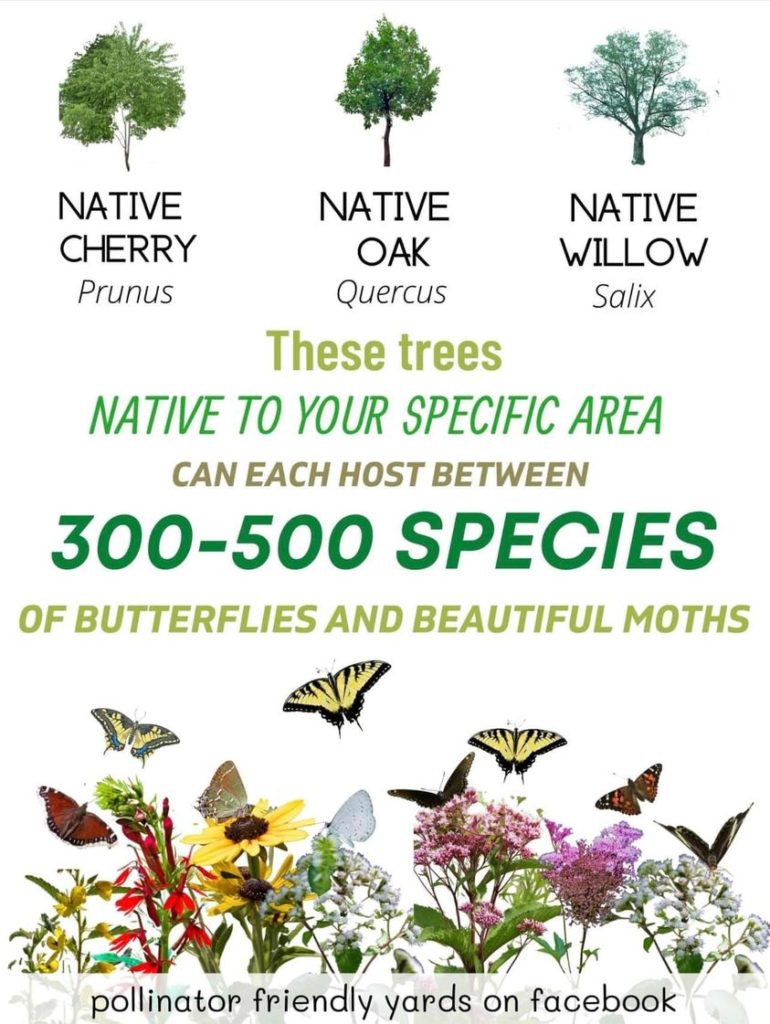
THIS is the SUPERPOWER of YOUR KEYSTONE NATIVE PLANTS.
- No exotic plant could ever achieve this.
- Want butterflies? Feed the caterpillars with keystone plants!
- Exotic plants will never support as many different species of caterpillars as the Keystone Natives can.
- Find your keystone native plants here by zip code.
If your zip code doesn’t give you enough information try zip codes of the nearest larger town or city. LINK: https://www.nwf.org/NativePlantFinder/
Trees and Shrubs
- Ornamental grasses can be divided now.
- Water slowly and deeply if it is very dry.
- Plant evergreens for winter interest.
- Prune evergreens to get in shape for fall/winter.
- Cover berry bushes and fruit trees with bird netting.
- Fertilize your azaleas and rhododendrons and monitor them closely for any lacebug damage.
- Take soft cuttings of plants to propagate.
- Check often and water newly planted trees if they don’t pass the finger test (stick your finger deep into soil – dry? Water!)
- If you must mulch, remove old mulch and then add 2″ – 3″ shredded pine or pine needles, keeping 3″ away from trunk.
- Remove Ivy, Pachysandra, and other vine-like groundcover from under shrubs.
- Soil test established trees that have not been performing well.
- Keep mowers and trimmers away from trunks!
- Mulch or compost healthy leaves.
- Soil test established trees that have not been performing well.
- Put diseased leaves, pesticide-laden grass clippings and weed seeds out for recycling rather than the compost pile.
- Spray with dormant oil to decrease pest infestations.
- Remove dead and dying trees.
- Pests to watch for: aphids, adelgids, azalea lacebug, bagworms, borers, caterpillars, gypsy moths, Japanese beetles, scale, sawfly, spidermites, leafminers, voles, webworm, and deer.
- Diseases to watch for: Powdery mildew.
- For more tips, see UMD’s HGIC Garden Tips for more details.
What’s to Plant in September
Do you know what you should plant in September? Radishes, spinach, and turnips are just a few. Keep in mind some of the vegetables on this list are transplants. Check out the UMD Extension Home & Garden Info Center for more details: https://extension.umd.edu/resource/when-plant-vegetables
Vegetable Planting Calendar
Download vegetable planting calendars from University of Maryland Extension, in English and Spanish. This page also has a link to a frost/freeze date calculator.
Cover Crops for Climate-Resilient Soil- Try It, You Might Like It
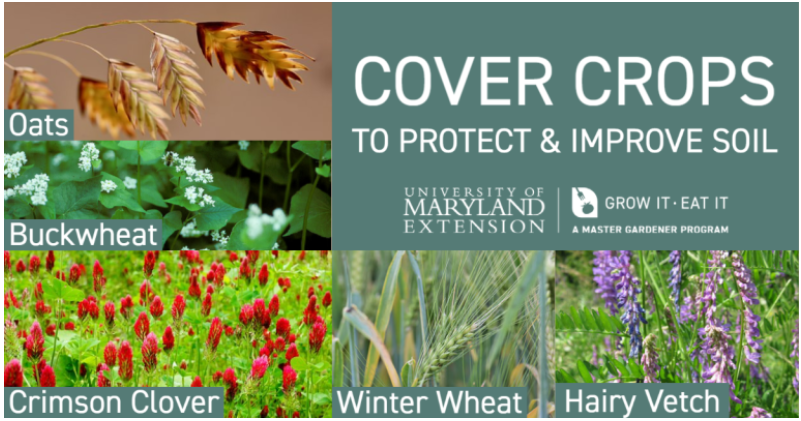
Cover crops are typically planted from late August through October and include grasses like winter rye, winter wheat, barley, and oats and legumes like crimson clover and hairy vetch. Plants in the legume family, together with special soil bacteria, transform nitrogen from air into a plant-available form.
Herbs, Veggies, and Fruit
- Pick mature tomatoes and peppers to ripen on your window sills.
- Plant garlic through the end of October.
- Preserve gourds for display in the fall.
- Buy apples at a local pick-your-own farm or visit a local farmer’s market.
- Harvest leaves of herbs used in cooking (rosemary, basil, sage) in the early morning, for best flavor.
- Continue planting cool-season vegetables (turnips, carrots, beets, spinach, Chinese cabbage, kale, Brussels sprouts).
- Remove finished plants.
- Plant heat-tolerant vegetables (Malabar spinach, Swiss chard).
- This is a good time to have vegetable gardens and landscapes soil-tested.
- New fruit plants: keep watered their first spring, summer, and fall.
- Harvest strawberry beds daily.
- Dig up garlic when tops turn brown. Let dry in sun, then store.
- Plant tender transplants: tomatoes, peppers, eggplant, okra, sweet potato.
- Sow seeds of: beets, beans, cucumbers, pumpkins, and squash for fall harvest.
- Keep all transplants watered deeply for 2-3 weeks.
- Put in supports for tomatoes and tall-blooming plants.
- Divide perennials and herbs. Pot up extras and give away at plant swaps.
- Thin seedlings.
- Harvest your herbs often and keep them trimmed back to encourage leafy growth.
- Apply dormant oil spray to fruit trees.
- Pests to watch for: aphids, mealybug, scale, spider mites, squirrels, whitefly.
- Diseases to watch for: Powdery mildew, fungal, bacterial, viral diseases.
- Here are some more UMD’s HGIC Garden Tips.
Lawns
- This is the perfect time for seeding the lawn.
- Plug aerate when soil is moist.
- Apply fertilizer and lime to turf grass based on soil tests and UME recommendations.
- Cool season lawns go dormant in hot, dry weather – Do Not Water.
- Keep newly seeded lawns well watered.
- Mow in the early evening.
- Begin mowing leaves into turf to add organic matter and nutrients.
- Fertilize tall fescue and bluegrass with 1 lb. Nitrogen per 1000 square feet.
- Water established lawns deeply but infrequently.
- Mow high to reduce weeds and stress: Fescue & Bluegrass: 3″ – 3 1/2″, Zoysia: 2″
- Control wild onions in warm season turf with broadleaf weed control.
- Clean yard of all leaves and other debris.
- Turn your compost pile.
- The annual soil science calendars from the Natural Resources Conservation Service are both educational and beautifully done. The one for 2022 as well as those for previous years are available as free PDFs here: https://www.nrcs.usda.gov/wps/portal/nrcs/detail/soils/edu/?cid=nrcseprd1250008
- Diseases to watch for: brown patch, and red thread
- Pests to watch for: Grubs
- See UMD’s HGIC Garden Tips for more details.
Indoors/Houseplants
- Bring in tender plants before night temperatures dip to 60 degrees.
- Begin conditioning Christmas Poinsettias and Christmas cactus to get them ready for the holiday season.
- Bring Amaryllis indoors before a hard freeze. Repot every other year at this time. Store in a cool, dark place and do not water until flower buds or leaves emerge.
- Repot and fertilize houseplants when new growth begins.
- Take cuttings of plants you want to overwinter inside and place in water.
- Change water in cuttings started last fall and add 2-3 pieces of fish tank charcoal.
- Do not over water house plants.
- Check on your container plants daily and keep them well-watered.
- Rotate houseplants to promote even growth.
- Remove old leaves, damaged stems.
- Pinch out growing tips of leggy cuttings and plants that are overwintering.
- Clean the leaves of your indoor houseplants to prevent dust and film build-up.
- Pests to watch for: aphids, spider mites, mealybug, scale, and whitefly.
- See UMD’s HGIC Garden Tips for more information.
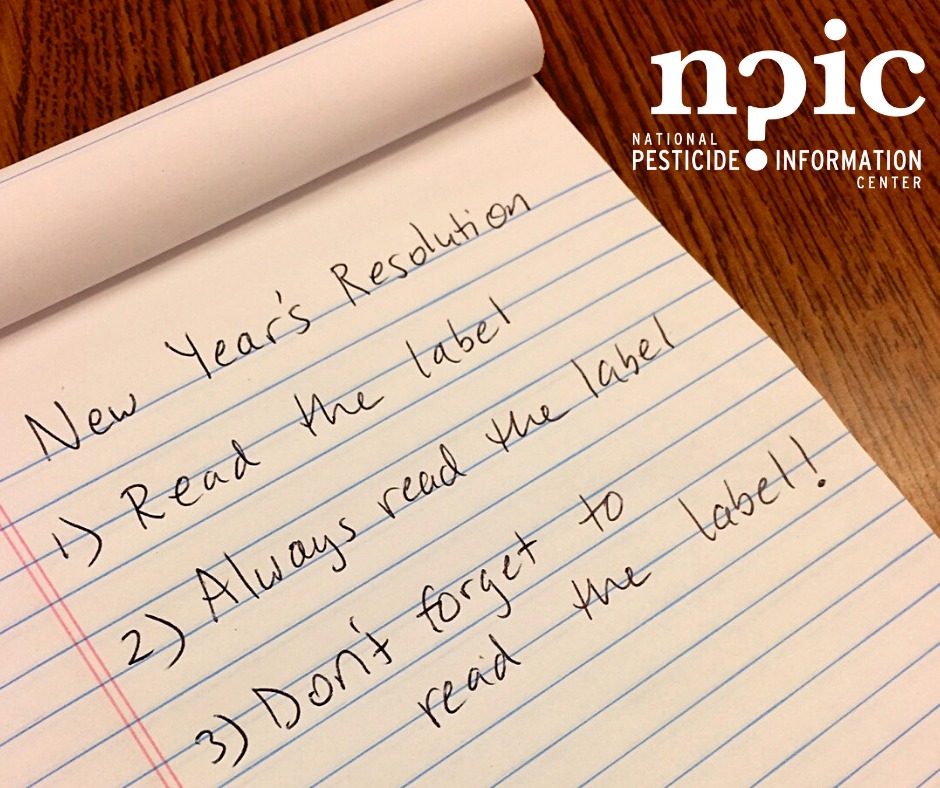
Read and follow label instructions on all pesticides and herbicides.
Start the year off by minimizing your #risk to #pesticides and always #ReadTheLabel! Learn more here: http://npic.orst.edu/health/readlabel.html
Questions about your label? Call us! 800-858-7378 M-F 8am-12pm PST
Indoor/Outdoor Insect and Wildlife Tips
- Watch for insect and disease problems throughout your garden.
- Caulk and seal your outside walls to prevent insect entry into your home.
- Ticks are very active now.
- Check your plants at night with a flashlight for any night-feeding insects like slugs.
- Look out for slug eggs grouped under sticks and stones. They are the size of BBs and pale in color.
- Put out slug traps around your vulnerable edibles and hostas.
- Leave hummingbird feeders out until October 15th.
- Make hummingbird food by boiling two cups sugar in four cups of water.
- Put up birdhouses.
- Put suet out for birds.
- Keep bird feeders clean and filled.
- Change the water in your birdbath daily and throw the Mosquito Dunk (or bits) into any standing water.
- Switch your deer deterrent spray.
- Set out traps for mice, moles, and voles.
- Watch for: carpenter ants, flies, mosquitos, stink bugs, termites, rabbits, raccoons, groundhogs, deer, mice, moles, snakes, squirrels, and voles.
- For more information, see UMD’s HGIC Garden Tips.
Source: University of Maryland’s Home and Garden Information Center (HGIC) and the Washington Gardener.
Home & Garden Information Center Tips and Tasks
Support Our Local Farmers – Join a CSA and have fresh local produce delivered to you!
CSAs are seeing record numbers of subscribers http://ow.ly/eiQT50zD5lW – find your farmer here: http://ow.ly/jbO250zD56M
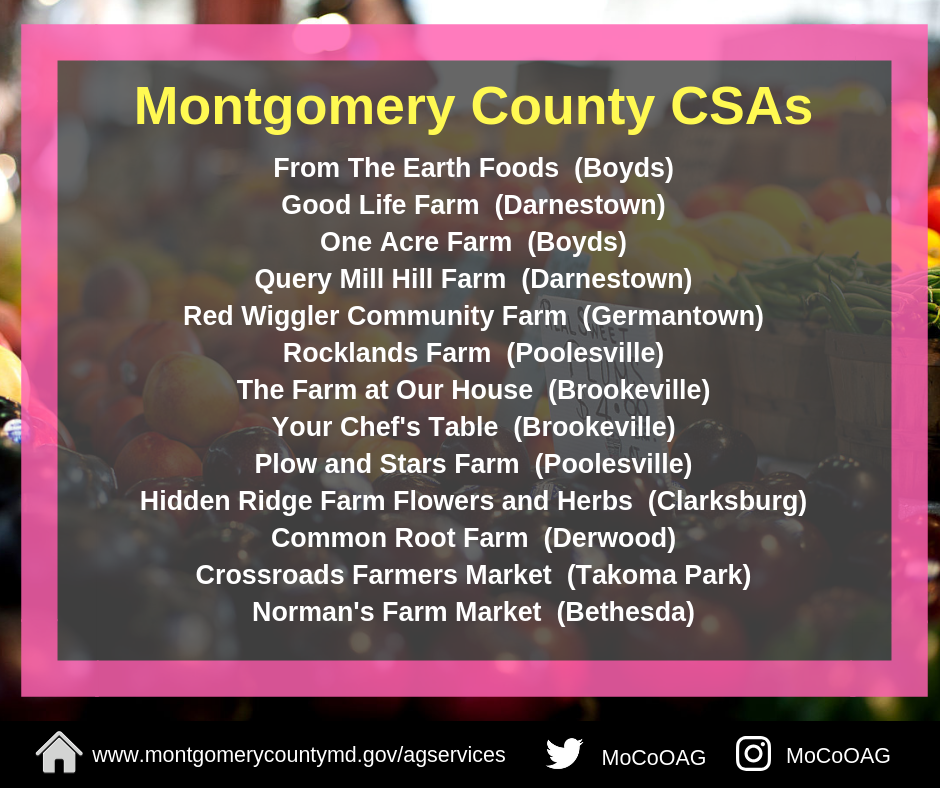
CSAs can take many forms, but essentially they are community supported farms in which members contribute to farming projects, usually by way of membership fees, in exchange for fresh, local produce. The concept came to the United States from Europe in the 1980s. They are a great way to take advantage of fresh, locally grown fruit, vegetables, herbs, and more while supporting nearby farms. Each one is different, some offer pickup locations in urban areas, some offer only farm-based pickups.
There are multiple CSAs located around the County offering a wide variety of products. CSAs begin taking sign-ups for spring and summer seasons in the early part of the year, and they tend to fill up FAST! Know of another CSA not on our list? Let us know! Montgomery Countryside Alliance also maintains a list:
http://www.mocoalliance.org/community-supported-agriculture.html
Grow It Eat It Community Garden Fair Event
Saturday, September 17, 2022
10am-2pm
Holy Cross Germantown Hospital
19801 Observation Drive
Germantown, MD 20876
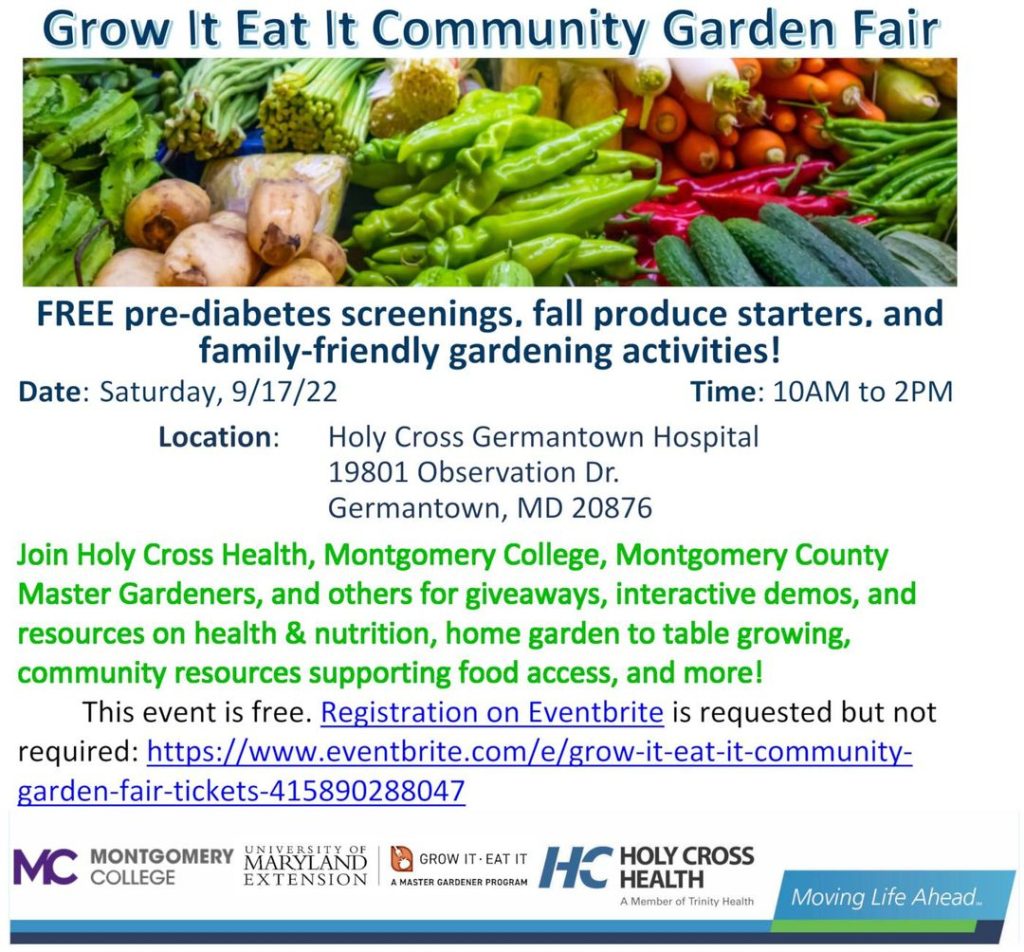
If you live in the #Germantown and #Gaithersburg area, this FREE event is for you! Grow It Eat It Community Garden Fair, Sept. 17, 2022, 10am-2pm, at Holy Cross Germantown Hospital , 19801 Observation Drive, Germantown, MD 20876. At this family-friendly fair, you can get a free pre-diabetes screening; learn about good nutrition and healthy eating habits, as well as community resources for food access; learn how to grow herbs and microgreens, and how to store and preserve foods; take home free plants so you can grow food at home; and learn about the upcoming Holy Cross Hospital Community Garden. The event is presented by Montgomery Community College, Montgomery County Master Gardeners, and Holy Cross Germantown Hospital. Participating organizations include HarvestShare, Community FarmShare, Gaithersburg HELP, Holy Cross Healthy Families, Montgomery College Horticulture Club, and Montgomery County Food Council. Registration for this FREE event is requested but not required:
Montgomery County Master Gardener Virtual Question & Answer Program

“In the Garden”
Streaming on Facebook Live on the First and Third Tuesdays of the Month. Next “In the Garden” session is on Tuesday, September 20th, 2022 on Facebook at 12 Noon ET. Live Q & A and Recording available at:
Woodland & Wildlife Wednesday
Wednesday, September 21st, 2022 at noon.
Forest Stand Improvement for Wildlife

Join us for our next Woodland & Wildlife Wednesday at 12 noon on September 21st. Dr. Craig Harper, Professor and Extension Wildlife Specialist, University of Tennessee will present a talk entitled “Forest Stand Improvement for Wildlife.” The webinar is free but registration is required. Visit go.umd.edu/woodlandwildlife for more information. And be sure to check out recordings of our earlier webinars on our website!
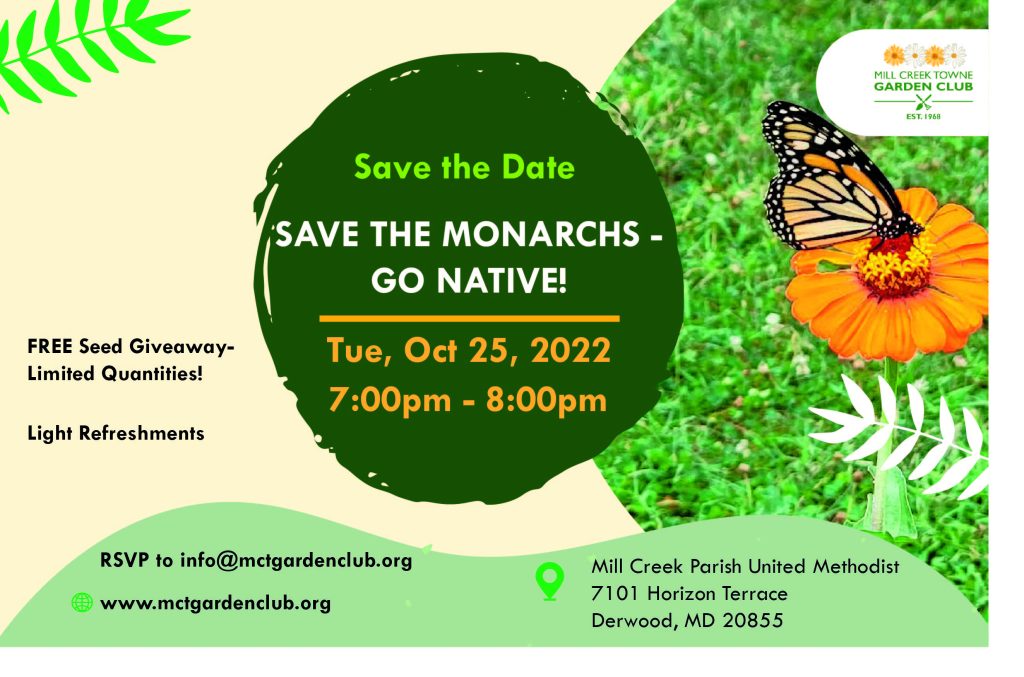
Save the Monarchs – Go Native
Tuesday, October 25, 2022 | 7 pm – 8 pm
Provided by: Mill Creek Towne Garden Club
Location:
Mill Creek Parish United Methodist
7101 Horizon Terrace
Derwood, MD 20855
Free
The Monarch Butterfly is on the brink of extinction. Learn how you can help save the monarchs in our short presentation, which includes a video and guest speaker, Dr. Lauren Hubbard, Certified Chesapeake Bay Landscape Professional and Master Gardener. Dr. Hubbard will share information on how you can jump on the butterfly bandwagon by landscaping with native Piedmont Region species plants that support out native pollinators.
RSVP: info@mctgardenclub.org
Let’s Talk Gardens
Thursdays 12 to 1 p.m.
Smithsonian Gardens

Let’s Talk Gardens, a free lunchtime webinar series on garden basics on Thursdays 12 to 1 p.m.
We will be resuming our programs later in the season, so stayed tuned for weekly sign-up emails when we return.
“Grow” your gardening know-how! Our free online gardening program, Let’s Talk Gardens, covers a wide range of topics presented by our own professional staff, as well as guest speakers.
And we encourage you to watch videos in our Let’s Talk Gardens Video Library.
